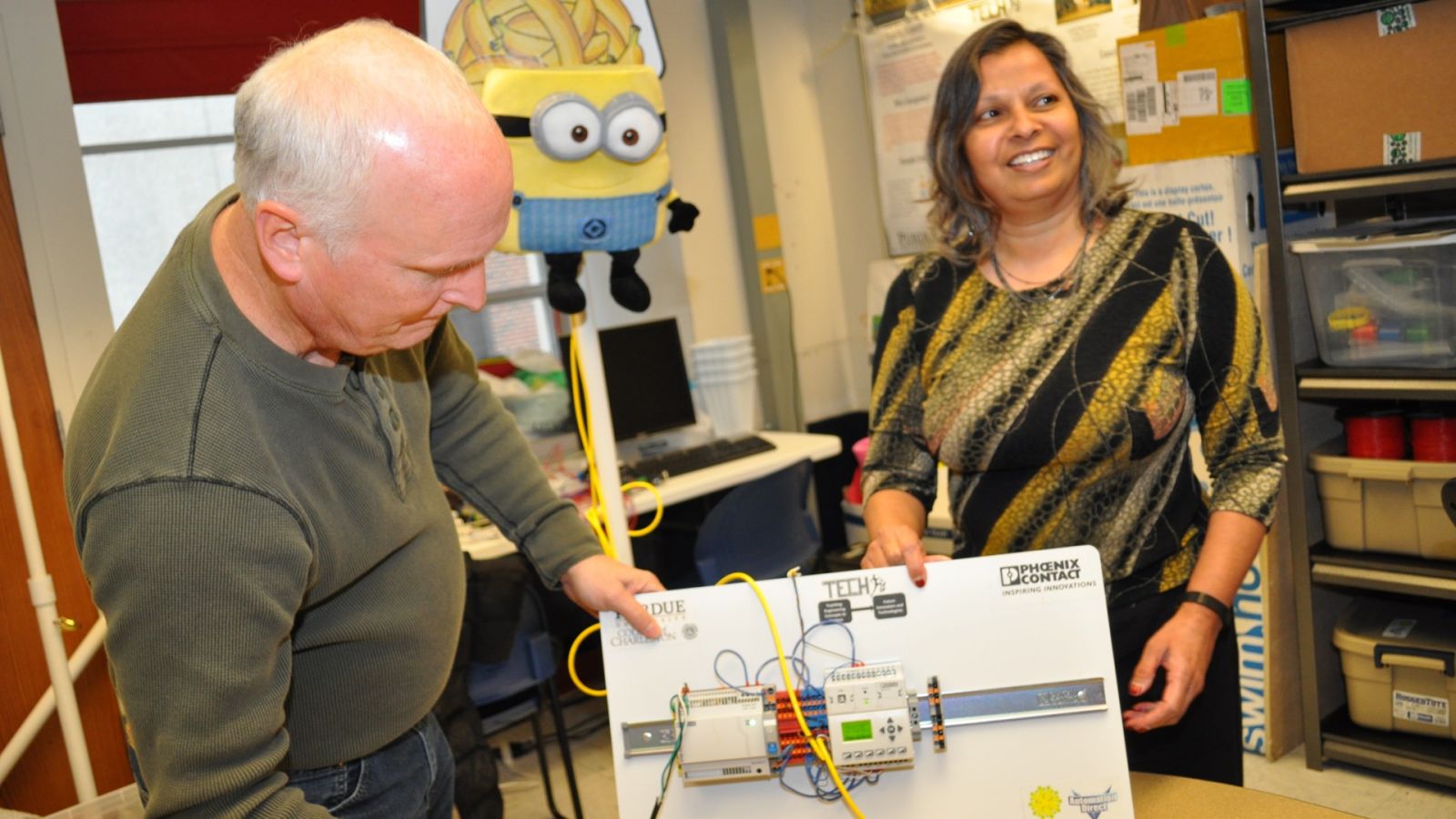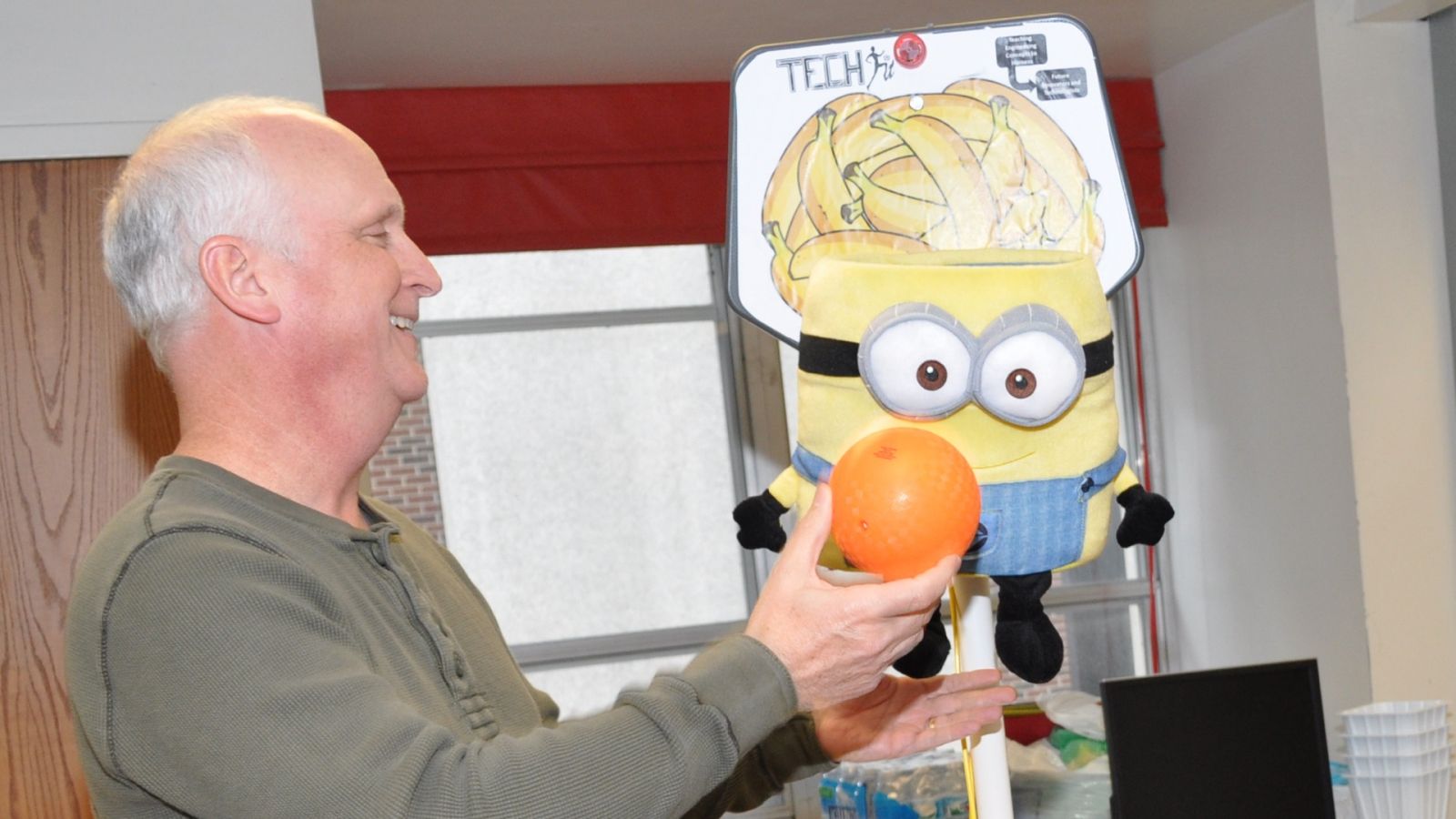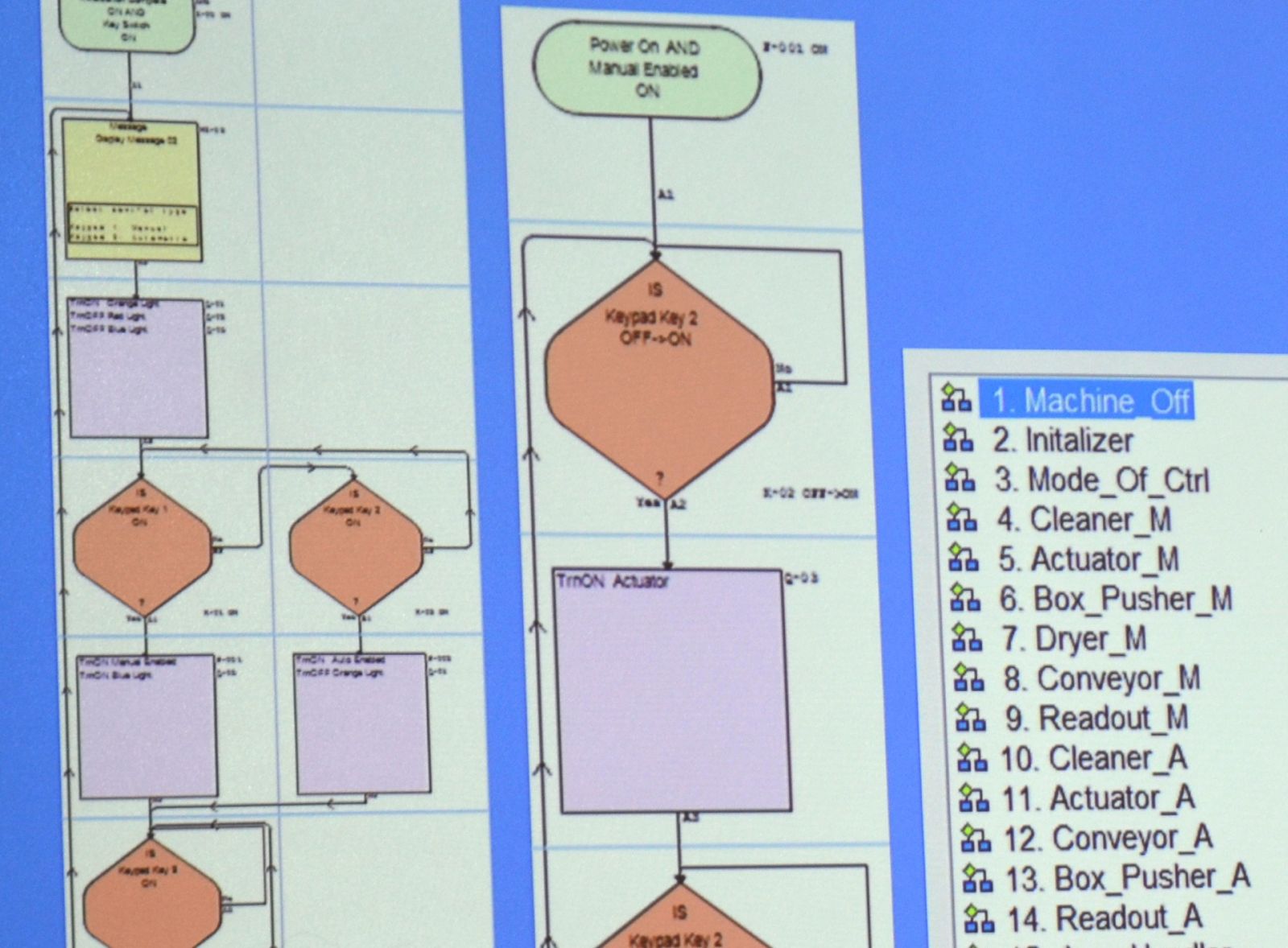
Two married couples, all Purdue faculty, frequently ran into each other at their kids’ athletic events over a period of nine years, and it led to $3.7 million in National Science Foundation (NSF) grants. This funding resulted in the creation of professional development programs in science, technology, engineering and math (STEM) for middle school teachers and new research into the development of computational thinking among middle school students across three learning contexts.
Alka Harriger, professor of computer and information technology, and Brad Harriger, professor of mechanical engineering technology, partnered with former Purdue professors Michael and Susan Flynn to create TECHFIT, Teaching Engineering Concepts to Harness Future Innovators and Technologists.
“TECHFIT is about getting kids excited about STEM,” Alka Harriger said. “In my discipline, there’s an incorrect stereotype that the job is solitary, working more with machines than people. But that’s not the case at all. We solve big problems, and it’s rewarding work. We wanted to give kids the opportunity to have fun playing with technology themselves, to learn how to come up with an idea, put their invention together and make it work (through programming).”
The program provides six-day professional development programs for middle school teachers, training them to design and implement technology-based fitness games, or “exergames.” Teachers at the same school collaborate to implement 10-week after-school programs for their middle school students, guiding them through the design and creation of their own exergames. Teachers from a variety of subject areas, including science, math, technology and physical education, are welcome.
Through the NSF grants, TECHFIT covers the cost of a technology toolkit, stipends for the teachers, and program expenses during the summer training. The student teams of each after-school program compete for a trophy at a showcase event at Purdue to share their TECHFIT experiences and demonstrate their exergames.
“The showcase serves as a friendly competition,” said Brad Harriger. “Judges evaluate their creations, looking at use of technology, creativity, and how fun it is to play, among other things. We hope each showcase gets students talking about technology and computing with their friends. It plants the seeds for future interest in STEM careers.”
TECHFIT’s origination
Before accepting positions at the College of Charleston in South Carolina, Mike and Susan Flynn were faculty members in Purdue’s Department of Health and Kinesiology. They saw the Harrigers frequently at their children’s sports events.
“For nine or 10 years, we would meet at wrestling tournaments and other events,” Alka Harriger said. “Susan had asked Brad for help designing a technology-infused dance mat to use in her classroom. I had been working on a program to get more women interested in computing. We talked about how to combine our skills. I thought, why don’t we put together a program where we can have kids learn how to invent their own exergames?”

That was the genesis for a program to give children knowledge in the fields of technology, computing and fitness, provide tools to demonstrate what they learn, and have fun while doing it. The Harrigers and the Flynns wrote proposals, ran a pilot study, received positive feedback, and, in October 2013, were awarded NSF funding for the TECHFIT program.
With his mechanical engineering technology background, Brad Harriger brought automation expertise to the project, including familiarity with controllers like the Nanoline from Phoenix Contact. Alka Harriger provided computer programming expertise using coding environments in Scratch and nanoNavigator. She explained that Scratch is a widely-accepted tool for teaching programming to youth, and nanoNavigator’s use of flowcharts to depict logical thinking and its built-in simulator make it easier to learn by novices.
The Flynns provide instructional expertise related to fitness. “Fitness is the application area for the participants’ inventions, so we needed to define what constitutes as exercise,” Alka Harriger said. “Does walking count if you don’t get your heart rate up? Mike provided the scientific foundation for our fitness content, and Susan provided a variety of fun fitness activities called brain blasts. She showed teachers how simple, inexpensive props could be used to run the brain blasts in their classrooms.”
A second grant
Examining TECHFIT’s strengths and weaknesses led to a new opportunity. In 2016, the Harrigers, along with Weiling Li and Loran Parker, researchers in Purdue’s College of Education, were awarded a second NSF grant to expand TECHFIT beyond after-school programs to two additional learning contexts: as elective classes and as embedded modules within discipline-specific middle school courses. The research team is studying the impact on student motivation for STEM and computing (STEM+C) by each of these three learning contexts. The new grant is titled, “Curriculum and Assessment Design to Study the Development of Motivation and Computational Thinking for Middle School Students across Three Learning Contexts.”
“We had a school where more than 100 students signed up, which is more than the toolkit was designed to handle,” said Harriger. “By the end of the process, they were down to 50 or 60 students due to competing opportunities like sports. But a couple of schools ran TECHFIT during the day rather than after school, and they had much better retention.”
The Harrigers saw that as an opportunity expand the program and to study the outcomes of different implementations. The STEM+C NSF program solicitation had a focus on computing, and Harriger said that given TECHFIT’s use of Scratch, flowchart programming, and physical computing applications, it was a perfect fit for that program.

“It’s difficult to explain what an exergame is,” Alka Harriger said. “Scratch was designed especially for young programmers. We use it as a vehicle to explain visually how to play the exergame you designed. As students develop their animated stories or interactive games, they’re going through the process of developing skills in computational thinking.”
“They’re learning genuine programming concepts almost surreptitiously,” said Brad Harriger. “Because using the tool is fun, you don’t even realize you’re learning.”
NanoNavigator gives students a chance to use a second programming tool. The resulting flowchart program is downloaded to the Nanoline microcontroller to make the physical system function. “Seeing the immediate results of their programming on a physical system that the students built themselves increases their motivation and satisfaction,” said Alka Harriger. “It should be noted that the Nanoline controller was originally designed for an industrial setting, so the technology is inherently more durable than other technology that could be used to create the same products.”
Because the Harrigers work with teachers rather than students, their research doesn’t directly measure how many students have been inspired to consider STEM majors in college through participation in TECHFIT programs. But they have received anecdotal evidence of success through feedback from teachers.
“At one school, we heard that a couple of star athletes opted to stay in TECHFIT rather than their sports,” Alka Harriger said. “Their coaches weren’t pleased, but their parents were very supportive. Another teacher told us that one student appeared to be on the way toward becoming a dropout, but the teacher’s TECHFIT class gave the student everything he was missing.”
Brad Harriger noted that support from industry partners has helped increase the success of TECHFIT. “Phoenix Contact and Balluff provide significant donations of hardware that help us create loaded toolkits for each of our participating schools. Each toolkit is valued at $2,700, and the majority of that is from their generous donations.”
Nearly 80 teachers from Indiana, South Carolina, Ohio, Washington, Michigan, Virginia, Wisconsin and Tennessee have participated in TECHFIT’s professional development programs. They used the training to implement TECHFIT programs or classes in more than 30 schools, directly reaching over 850 students.
Additional information:
- TECHFIT
- Teaching Engineering Concepts to Harness Future Innovators, 2013 grant (National Science Foundation)
- Curriculum and Assessment Design to Study the Development of Motivation and Computational Thinking for Middle School Students across Three Learning Contexts, 2016 grant (National Science Foundation)
- Six teams to compete at Purdue in 2018 midwest Nanoline automation contest
